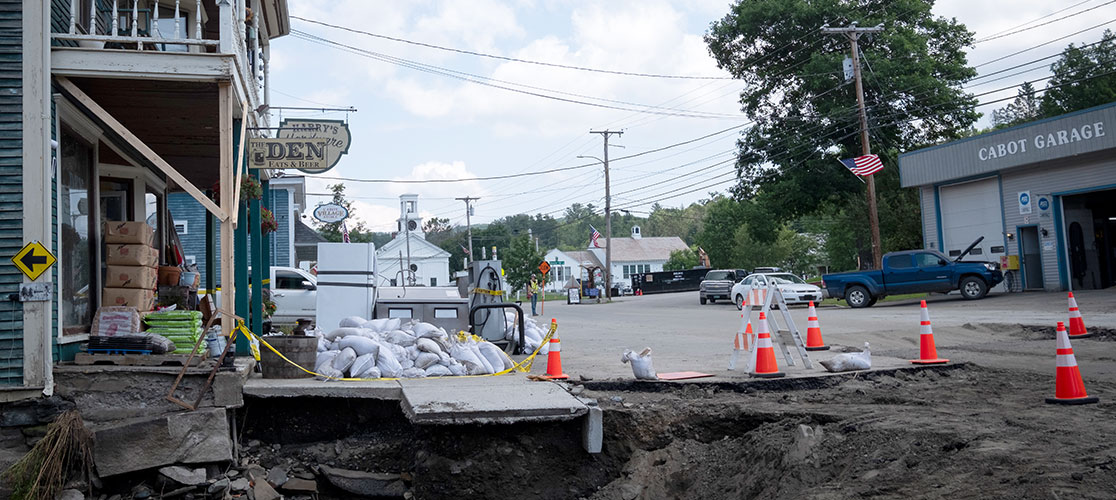
VT Food Security Roadmap: Objective G6
G6: Invest in Vermont’s town and village infrastructure
G6: Invest in Vermont’s town and village infrastructure

Maintaining and improving village infrastructure is a high-leverage area for food security and general emergency preparedness.
Functioning town infrastructure makes compact settlement possible and enables the development of housing at the scale necessary to house those already here and those who may come as climate change causes large-scale migration from the coasts. When people can live in towns and villages, it reduces rural sprawl and development pressure on working and potential farmland, eases transportation demand, supports the small businesses that respond to community needs, and creates a critical mass of people to support economic well-being and access to fresh food. Rural sprawl is also an inherently inequitable land use pattern, as it complicates access to and delivery of services and either ties people to car ownership or dependence on rides (including on-demand public transit where available); moreover, everyone under the age of 16, along with many seniors and people with disabilities, are unable to drive or may choose not to. Food security policy should not assume access to a personal vehicle.
Keep in Mind
Vermont towns and villages range in capacity, staff, and ability to coordinate infrastructure projects or seek funding. Roadmap to 2035 implementation must involve town employees and regional planners, who may need targeted funds to enable their participation. Villages and downtowns are hubs for food access, housing, civic and social activity, and commerce.
Strategies marked with a ![]() are high-priority
are high-priority
Invest in the infrastructure of Vermont’s villages, downtowns, and other settled areas. Create conditions to retain what exists and to move critical infrastructure away from flood hazards.
Build upon investments in village and downtown wastewater and drinking water infrastructure. Wastewater systems may make compact settlement (including housing) possible in some places. In villages and downtowns where existing food businesses are utilizing their own on-site septic and water, consider building new “community water and wastewater systems” to support their ability to expand and new food businesses to be created/located there.
Ensure villages, downtowns, and neighborhoods are flood-resilient and, when expanded, are done so away from flood hazards. Make this a priority of the Municipal Planning Grant program and the Flood Resilient Community program.
"We also need systemic changes aimed at lifting community members out of poverty. Things like a just transition to renewable energy to alleviate energy poverty on a mass scale, major investments in affordable housing, availability of childcare, and investments in public transportation. These are the kinds of programs that don’t simply materialize without our legislators and community leaders taking serious action and they all have a very direct impact on access to healthy, affordable foods.”
"Who do you call if you are a rural elderly living without internet access, transportation or childcare?”
"We don’t have supermarkets in places where people can get to them."
"I was part-time then full time at a new job during the pandemic, which had more income, but it was still a struggle to afford food and get access to it and the biggest barrier was transportation."
"I have a vehicle, but it had issues and I am immunocompromised so was concerned about in person interactions. I get that logistics of delivery are complicated, but delivery would have helped a lot. Navigating bus system are challenging, and maybe the location is not on a route. Brainstorming transportation ideas most important to Food Security Plan."